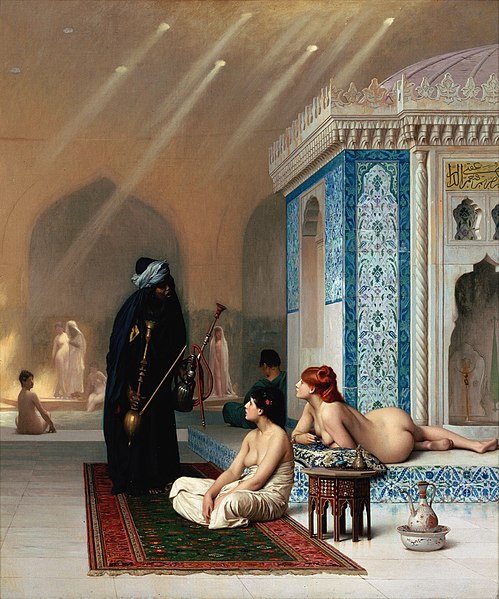In art history, literature and cultural studies, orientalism is the imitation or depiction of aspects of the Eastern world by writers, designers, and artists from the Western world. Orientalist painting, particularly of the Middle East, was one of the many specialties of 19th-century academic art, and Western literature was influenced by a similar interest in Oriental themes.
Jean-Léon Gérôme, The Snake Charmer, c. 1879. Clark Art Institute.
Eugène Delacroix, The Women of Algiers, 1834, the Louvre, Paris
Unknown Venetian artist, The Reception of the Ambassadors in Damascus, 1511, Louvre. The deer with antlers in the foreground is not known ever to have existed in the wild in Syria.
Professor G. A. Wallin (1811–1852), a Finnish explorer and orientalist, who was remembered for being one of the first Europeans to study and travel in the Middle East during the 1840s. Portrait of Wallin by R. W. Ekman, 1853.
The Orient is a term referring to the East in relation to Europe, traditionally comprising anything belonging to the Eastern world. It is the antonym of the term Occident, which refers to the Western world.
Harem Pool by the Orientalist painter Jean-Léon Gérôme c. 1876; nude women in harem or bathing settings are a staple of much Orientalist painting





